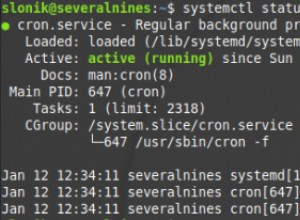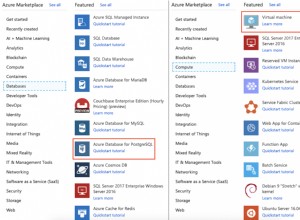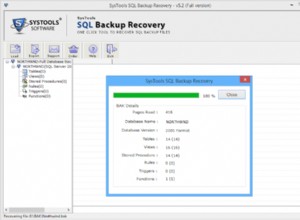Pomyślnie użyłem SMO przywrócić bazę danych. Podzielę się swoim kodem. Mam nadzieję, że to pomoże. To rozwiązanie ma jednak jedno zastrzeżenie, zakłada, że masz tylko jeden podstawowy plik danych. Dopasowanie dziennika i plików danych jest naprawdę trudne i coś może pójść nie tak na wiele sposobów. W każdym razie spróbuj i daj mi znać, że to pomoże.
using System;
using System.Collections.Generic;
using System.ComponentModel;
using System.Data;
using System.IO;
using System.Text;
using System.Threading;
using Microsoft.SqlServer.Management.Common;
using Microsoft.SqlServer.Management.Smo;
using Microsoft.Win32;
namespace DatabaseUtility
{
public class BackupRestore
{
static Server srv;
static ServerConnection conn;
public static void BackupDatabase(string serverName, string databaseName, string filePath)
{
conn = new ServerConnection();
conn.ServerInstance = serverName;
srv = new Server(conn);
try
{
Backup bkp = new Backup();
bkp.Action = BackupActionType.Database;
bkp.Database = databaseName;
bkp.Devices.AddDevice(filePath, DeviceType.File);
bkp.Incremental = false;
bkp.SqlBackup(srv);
conn.Disconnect();
conn = null;
srv = null;
}
catch (SmoException ex)
{
throw new SmoException(ex.Message, ex.InnerException);
}
catch (IOException ex)
{
throw new IOException(ex.Message, ex.InnerException);
}
}
public static void RestoreDatabase(string serverName, string databaseName, string filePath)
{
conn = new ServerConnection();
conn.ServerInstance = serverName;
srv = new Server(conn);
try
{
Restore res = new Restore();
res.Devices.AddDevice(filePath, DeviceType.File);
RelocateFile DataFile = new RelocateFile();
string MDF = res.ReadFileList(srv).Rows[0][1].ToString();
DataFile.LogicalFileName = res.ReadFileList(srv).Rows[0][0].ToString();
DataFile.PhysicalFileName = srv.Databases[databaseName].FileGroups[0].Files[0].FileName;
RelocateFile LogFile = new RelocateFile();
string LDF = res.ReadFileList(srv).Rows[1][1].ToString();
LogFile.LogicalFileName = res.ReadFileList(srv).Rows[1][0].ToString();
LogFile.PhysicalFileName = srv.Databases[databaseName].LogFiles[0].FileName;
res.RelocateFiles.Add(DataFile);
res.RelocateFiles.Add(LogFile);
res.Database = databaseName;
res.NoRecovery = false;
res.ReplaceDatabase = true;
res.SqlRestore(srv);
conn.Disconnect();
}
catch (SmoException ex)
{
throw new SmoException(ex.Message, ex.InnerException);
}
catch (IOException ex)
{
throw new IOException(ex.Message, ex.InnerException);
}
}
public static Server Getdatabases(string serverName)
{
conn = new ServerConnection();
conn.ServerInstance = serverName;
srv = new Server(conn);
conn.Disconnect();
return srv;
}
}
}




